
京都で芸者体験、舞妓体験 MAIKOYA
| English | 代理店様 |
|---|

| English | 代理店様 |
|---|



京都観光の締めくくりに、美味しい食事を楽しみながら、舞妓・芸妓さんの伝統的な舞を鑑賞するのはいかがでしょうか? 京都ではいくつかの芸者ディナーショーがありますが、その多くは祇園エリアかその周辺で提供されています。お食事や舞鑑賞の後は舞妓・芸妓さんへの質問タイムや、お座敷遊びを体験したりできます。
詳細 / ご予約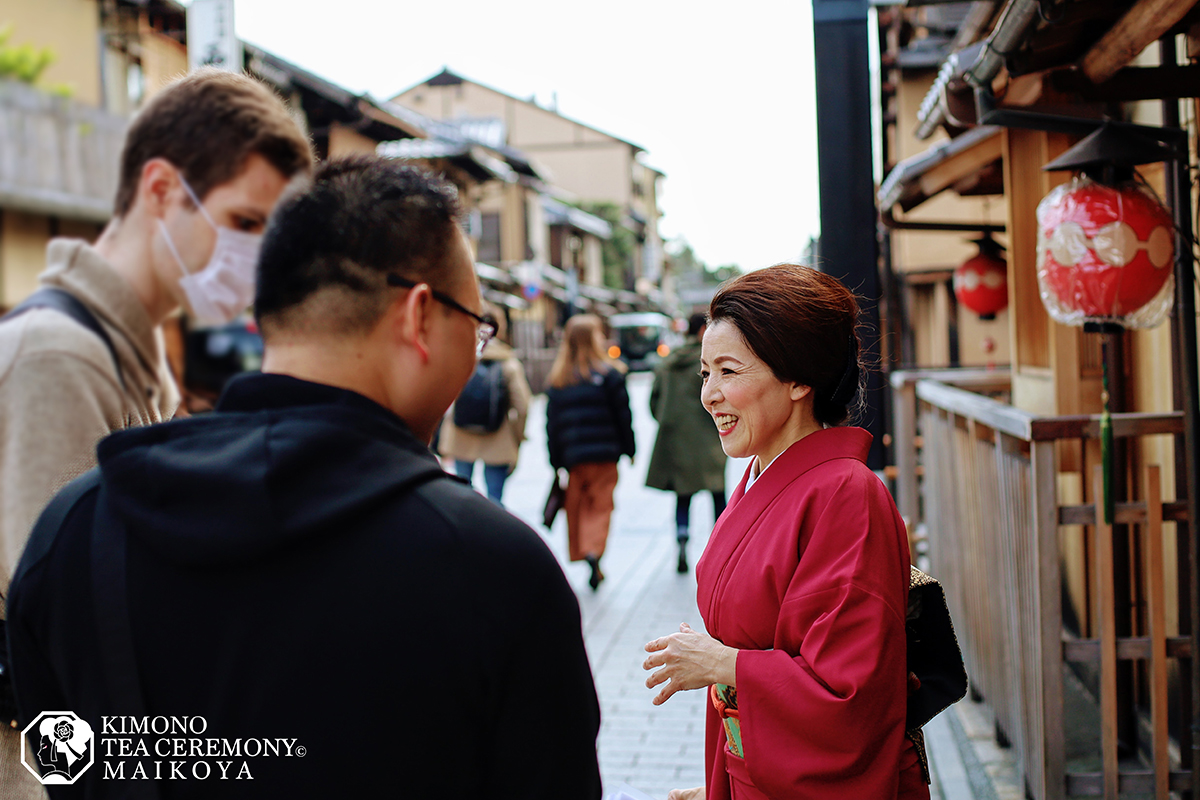
MAIKOYAが祇園で開催するウォーキングツアー。祇園の文化や歴史、隠れた穴場について学び楽しむことができます。ツアーで毎回、舞妓さんや芸者さんが見られるものではありません。英語も話せる地元のツアーガイドが、祇園の歴史的建造物を紹介し、芸舞妓さん達と会える体験を開催しているお店などもご案内します。
詳細 / ご予約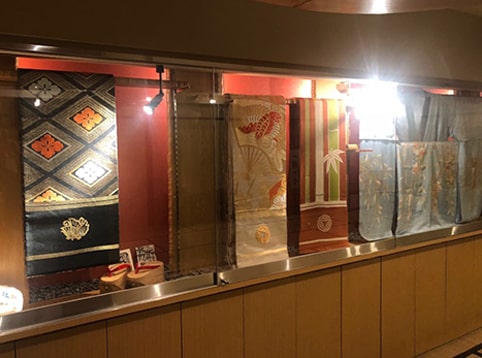
京都の芸者の歴史と文化に関する多くの展示、美術工芸品、解説があるミュージアム。 約30分間のガイド付きツアーもあり、芸者が使う楽器やヘアアクセサリー、着物などの展示を見られます。舞妓と芸妓の違いや、見習いから舞妓となり芸妓になるまでの修行について、などもシンプルでわかりやすく解説されています。英語での説明があるので海外の方におすすめ。さまざまなショーや芸者体験も行っています。
詳細 / ご予約
熟練したスタッフの手で、本物さながらのメイクやヘアセット、着付けをし、あなたを美しい舞妓に変身させます。本格的な和室やお庭などでカメラマンが撮影した写真は、当日のうちに素敵なオリジナル写真集となって受け取ることができます。芸者・舞妓変身スタジオは、清水寺や祇園の花見小路から徒歩圏内、旅行者に人気の「二寧坂」にあります。
詳細 / ご予約
京都には5つの花街があり、祇園甲部はその中でも最も有名な一見さんお断りのお茶屋が立ち並ぶ地区です。観光客の多くは京都旅行中に祇園甲部の歴史的な通りや花見小路を訪れます。そこには芸者(舞妓・芸妓)の置屋、お茶屋、歴史的な寺院などがあります。
祇園ウォーキングマップ
祇園での観光客のマナー違反が時折問題となっています。
芸舞妓さんのプライバシーを尊重しましょう。 近づきすぎると、祇園の狭い通りで自分自身と芸舞妓さんを危険にさらす恐れがあります。通行中の芸舞妓さんは仕事に行く途中である可能性が高く、時間に遅れてはならないことを理解しましょう。また、芸舞妓さんたちに同行しているお客様のプライバシーも守らなくてはなりません。
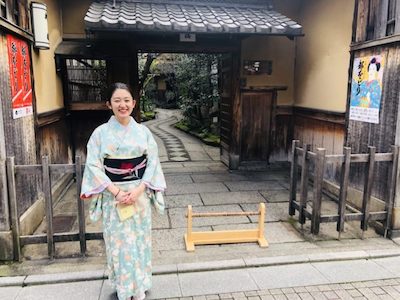
Gion is the most prestigious geisha district in Japan which was established during the Edo period in the 17th century.The area is right in front of Yasaka shrine since the shrine’s pilgrims needed an entertainment area where they could take a rest, drink, eat, relax, and prepare for the journey back home. In 1871, Yasaka Shrine, which used to be called the Gion Shrine, was recognized as the kanpei-taisha (the highest ranking government supported shrine). Afterwards, a number of tea houses near the shrine were built and many geisha started serving tea to visitors. During the Meiji period, there would be over 700 teahouses and over 3000 geiko and maiko inside Gion. In 1881 Gion was separated into two parts, Gion Kobu (The Western side of the Hanamikoji Street) and Gion Higashi (The Eastern side of the Hanamikoji Street).
Nowadays, Gion Kobu is inhabited by about 70 geiko and 30 maiko, and they work at 60 teahouses. The map below shows the southern side of Gion Kobu also known as Gion Minamigawa which is the area visited by most tourists. While this part of Gion is most popular housing the Kenninji Temple with Zen Gardens and Kyoto’s oldest geisha house Ichriki Chaya, the other side of Shijo Street known as Gion Shirakawa is called the most beautiful street in Kyoto. Gion Kobu’s geiko and maiko study the Inoue school of dance which is influenced by Noh theatre. The geiko and maiko of Gion kobu also present the Miyako Odori stage performance every April. The crest of Gion kobu represents a dango (sweet rice cakes) skewer with “Ko” sign inside.
Read More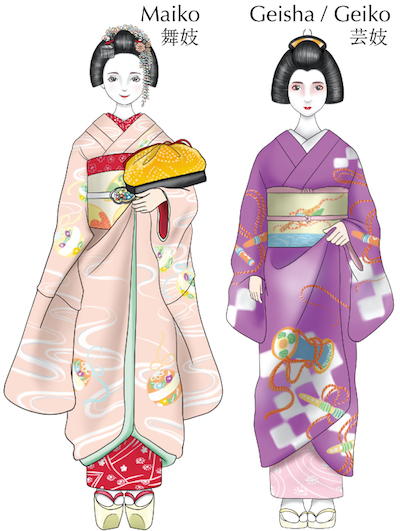
The main differences between maiko and geisha (geiko) are age, appearance and skills.
Maiko is usually younger than 20, wears more colorful kimono with a red collar and lacks conversation skills. Maiko means “dancing child” which refers to apprentice geisha who are still training. Maiko have to live in the geisha lodging house (okiya) with their mother (okamisan) for 5 years. Maiko, the apprentice geisha, are not allowed to have a cell phone, carry any money or have a boyfriend.
Maiko and Geisha (Geiko)
Maiko are the colorful and flashy apprentices. Maiko’s outfits are more eye-catching to divert attention from the lack of knowledge and experience. Geisha’s fashion is more mature and subtle. Maiko must live in the “mother”s house and depend on the little stipend she receives from the geisha house while geisha are more independent and live in a separate house of their own in the geisha neighborhoods. You can easily distinguish between geisha and maiko based on the image below that shows the differences in terms of outfit and appearance.
Read More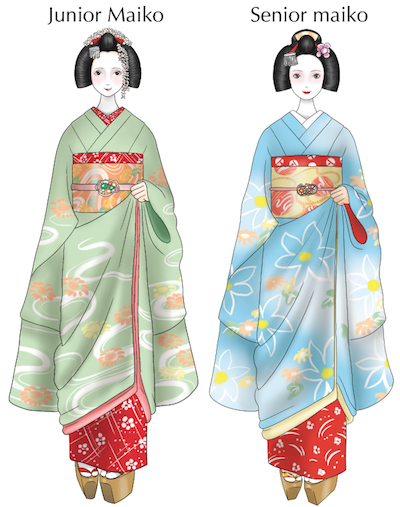
Most women enter the profession at the young age of 15 as compulsory education in Japan only goes up to middle school. Once they’ve made up their minds they can either be referred to the proprietress of an okiya by someone that they know, applying to the geisha union of a specific district, or contacting an okiya directly. Due to the popularity of the internet more and more okiya have started their own websites to showcase the glamorous lives of geisha and maiko and to allow young women to apply directly to them. The woman in question will then be interviewed by the proprietress of an okiya to see whether or not she’s serious about this line of work. If she is accepted then she will move into the okiya and begin her training.
When these women join the profession they are known as Shikomi (仕込み), which means “In Training.” This stage of training will last for approximately one year. During this time the young women will take lessons in dance and music, learn how to wear kimono, and speak in the special dialect of Kyoto known as Kyo Ben (京弁). Once she is deemed ready to enter the profession by her teachers she will take an exam. If she passes then she will set a date for her official debut.
Approximately one month before her debut she will begin to entertain at parties wearing the heavy kimono and makeup that have become iconic symbols of the profession, but instead of directly entertaining guests directly she will sit and watch her seniors and learn from their example. This stage is known as Minarai (見習い), which means “Learning By Observation.”
Once that period is up she will debut in a special ceremony known as Misedashi (見世出し), which means “Open For Business.” From this day forward she will be a Maiko (舞妓), meaning “Woman of Dance,” and undergo an apprenticeship that lasts an average of five years. Unlike geisha, maiko are yet untrained in the art of conversation and other formal arts, so their name reflects their limited specialization in dance.
Towards the end of their apprenticeship a maiko will enter a stage known as Sakkō (先笄), named for the special sakkō hairstyle that they wear, which lasts approximately 2-4 weeks. During this time they will wear the sakkō hairstyle as a sign that their apprenticeship is ending and that they will soon become geisha. They will even perform a special dance named Kurokami (黒髪), meaning “Black Hair,” to show their newfound womanhood. On the final day of their apprenticeship the maiko will take part in a special ceremony known as Danpatsu Shiki (断髪式), in which fellow maiko and geisha, along with loyal customers, will take turns clipping the wires that held her elaborate hairstyle in place. Once her hair is free she is no longer a maiko.
Read More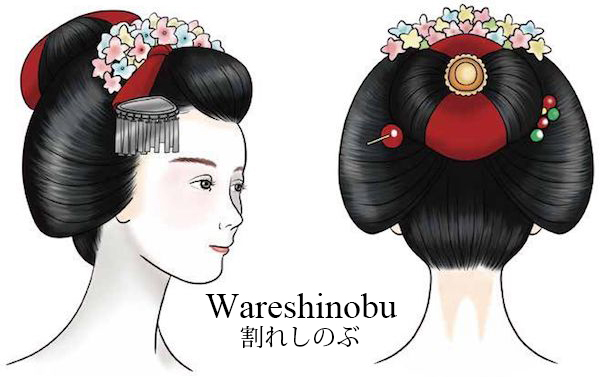
The hairstyles of maiko are the same as those worn by other girls their own age during the Edo Period and are worn to show seniority and rank. All hairstyles for maiko will feature a red piece of cloth tied in the front called a Chinkoro (ちんころ), which is a physical representation of their childhood and immaturity. The first hairstyle that a maiko will wear is called Wareshinobu (割れしのぶ) and is characterized with its iconic bun that has a red piece of cloth tied through it to match the chinkoro. A special hair ornament known as a Kanokodome (鹿の子留め) is worn in the centre of this bun as a show of opulence.
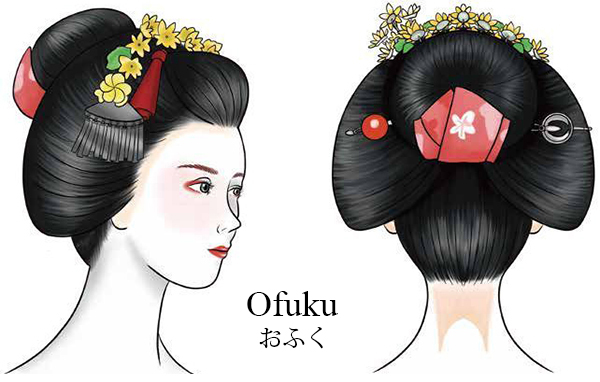
After 2 to 3 years a maiko will then style her hair in the Ofuku (おふく) style, which is characterized by a triangular piece of cloth pinned into the back of their hair. The cloth, called a Tegara (手柄), will start out as red and eventually move onto more muted colours like pink, or pastel blue. The tegara and its colours show that she is now a senior maiko and will continue to wear this style until her sakkō period.During special formal occasions senior maiko will also wear additional hairstyles. Yakko Shimada (奴島田) features a high bun with a cloth tied underneath and a string of beads tied on top that’s worn for New Year’s visits in January. Katsuyama (勝山) showcases a tubular shape with a cloth tied underneath and two special hair ornaments known as Bonten (梵天) placed on either side of the roll that’s worn during the Gion Festival (祇園祭) in July.
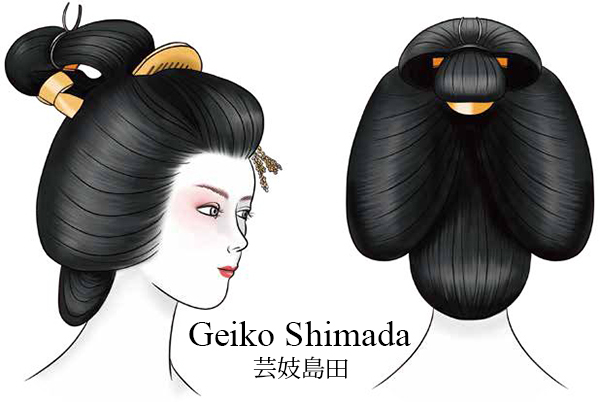
Finally a maiko will wear the Sakkō (先笄) style at the end of her apprenticeship. It is characterized by a myriad of tortoiseshell hair ornaments, a set of silver wires that resemble the wings of a dragonfly, and a tuft of hair that hangs down at the back of the style.
A maiko will use her own hair for these elaborate styles and will see a special hairstylist once a week to have it reset. During this time she must sleep on a special pillow known as a Takamakura (高枕) that keeps the hair from falling apart. Traditionally the okaasan of an okiya would sprinkle rice or bran around the takamakura of a new maiko to make sure that she was using the takamakura properly. If the maiko rolled off the pillow then her hair would become covered in grains and she’d have to go to the hair dressers and have the style set all over again. Due to their seniority, geisha will wear wigs called Katsura (かつら) when they entertain. This was originally adopted after World War II when the number of hairstylists was very low and they could not manage to style both the hair of the geisha and the maiko. A geisha’s wig is styled in the Geiko Shimada (芸妓島田) style, named for the term used for geisha in western Japan, and is taken care of by a wig specialist who will restyle the wig once a month to keep it looking fresh. Because they use a wig geisha no longer have to use a takamakura like maiko.
Read More